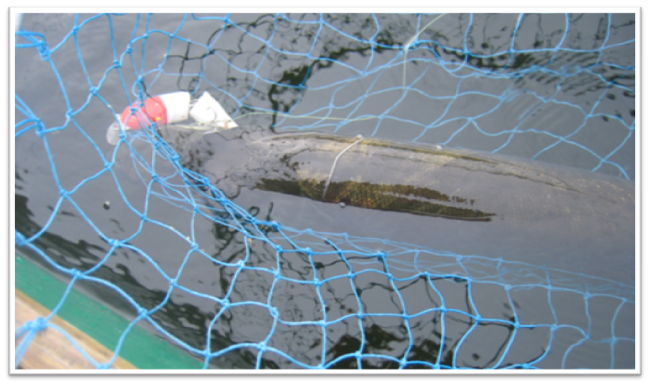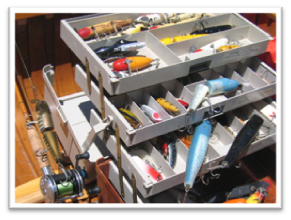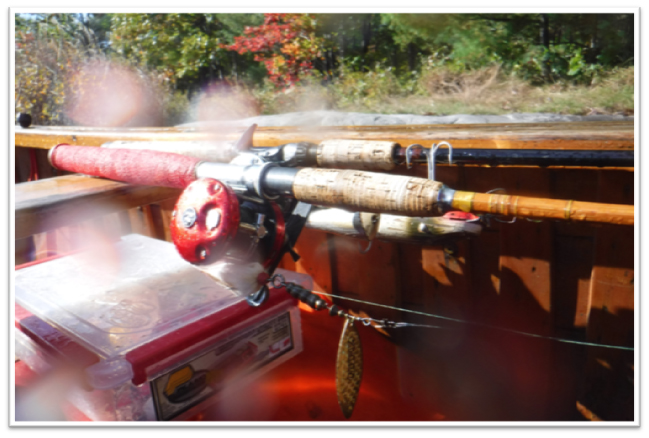
Chautauqua Lake Muskellunge
ARTICLE BY INDREK KONGATS, OCTOBER 19, 2016

When one thinks of a full moon, it is usually in conjunction with vampires and werewolves. For the angler, it is another type of wolf that makes his skin tingle and starts his blood pumping— the fresh water kind, the Muskellunge.
Known by many names—Esox, Lunge, Musky or Muskie—it’s all the same fish, the most aggressive freshwater species in North America. The musky is the ultimate game fish, big, strong, a leaper and dodger, teeth that gleam like in a villain’s grin.
Those of us that live in Springville and Ellicottville are surrounded by the world’s best musky waters. To the north, we have the Niagara River and a little bit further north we have Georgian Bay, part of Lake Huron; to the east, we have the Finger Lakes and the St. Lawrence River. The world record at 69 pounds, and the Canadian record at 65 pounds are from these waters. To the south, is the Allegheny Reservoir, or the Kinzua, as locals call it, but the best is to the west, Chautauqua Lake.
Chautauqua Lake, is a mere 45 minutes to an hour away, starting at Jamestown, NY and ending in Mayville, NY, approximately 17 miles in length. At an elevation of 1,308 feet above sea level, Chautauqua is higher than any of the Finger Lakes and is one of the highest navigable lakes in North America, definitely the highest musky lake that I know. Musky over 50 inches and 50 pounds are not only possible, but have been recorded in this lake’s history.
According to the DEC, Chautauqua’s musky population is supported by an annual stocking of 13,000 fall fingerlings (8.5 to 9 inches) by the hatchery at Prendergast Point. Special regulations govern and safeguard the musky population. The season opens the last Saturday in May and ends Nov. 30; a minimum size limit of 40 inches and a daily limit of one fish can be kept.
Another interesting fact is that the management and culture of muskellunge was born on the waters of Chautauqua Lake, dating back to 1888. The Prendergast hatchery is the only one raising a pure strain of muskellunge, with eggs collected only from Chautauqua Lake. Both species of musky are present in the lake— the smaller hybrid Tiger musky (a cross between a northern pike and muskellunge), feisty and more aggressive than its larger cousin, the true muskellunge, Esox masquinongy.
Getting back to the full moon! Musky fishing peaks with the full moon, in particular the Harvest Moon in September and all subsequent full moons until the season ends. Not only do humans react to the full moon in some very peculiar ways, so does the musky— they get hungrier, more aggressive and downright mean. In fact, they’ll rip apart the biggest lures in your tackle box. 
The preferred method of hooking these toothy critters is to troll for them and troll fast.
The recommended trolling speed is up to 5 mph. If you know anything about physics, Newton’s first law states an object in motion stays in motion with the same speed and in the same direction unless acted upon by an unbalanced force. The musky is that unbalanced force, in more ways than one. Musky travel about four times the speed of your lure and, in this case, in the opposite direction. All I can say is hold onto your rod and make sure you hold onto your seat!
Of course you can always chuck lures for musky, the fish of a thousand casts, or you can sit in a comfortable fighting chair waiting patiently for the main event to start. The sheer force of the strike, when trolling, is unequalled in the angling for any other sport fish. I’ve been amused many times as a fellow angler begins to doze off while in the pursuit of a musky only to be jarred viscously awake, even falling out of their seat.
Staying alert is the number one rule in musky fishing; as a musky strikes, you have to immediately counter strike by setting the hooks into its very toothy and rock solid jaw. If you don’t get a hook set, your fight will surely end in disappointment and your lure will fly back into your face once the musky leaps out of the water.
The second rule is sharpen your hooks, and have a stout rod to set those hooks into solid bone. After trolling over a rocky bottom your hooks are no longer sharp, so have a file with you, or have another fresh lure to toss out as bait.
The rod needs to be balanced with a minimal of 30-pound test line. The old Dacron lines are still good as they have zero stretch but they are thick and bulky. The new braided lines are super thin even at 80-pound test and are the best. Put no less than 150 yards on your reel as well.
Rule number three is to have a good length of steel leader between your line and your lure. The recommended length is 36 inches; I prefer making my own out of single-strand fishing wire as this length is hard to find commercially. When a musky attacks, it is a frontal attack. The leader is the first to go through a buzz saw of a thousand razor sharp teeth, well before the lure even reaches the gaping jaws.
Finally rule number four, enjoy the fight! Many anglers are taught to bring the fish to the net as quickly as possible to increase the chance that the fish will survive upon release. Hog wash! 
First, that’s like going to the most expensive restaurant, making reservations a year in advance only to gobble down your meal in less than a minute.
Second, you’ll probably end up with a belly ache as well as your fish. Bringing a green fish to the net is like lighting a stick of dynamite with a very short fuse; it’s going to blow up in your face and the fish will panic and injure itself.
Play the fish gently like walking your dog; keep pressure on the leash, but don’t get into a tug of war. Land the fish when the fish is mentally subdued, not physically.
Enjoy your date with Esox, maybe you’ll get a second if you are lucky!
back to main menu

|